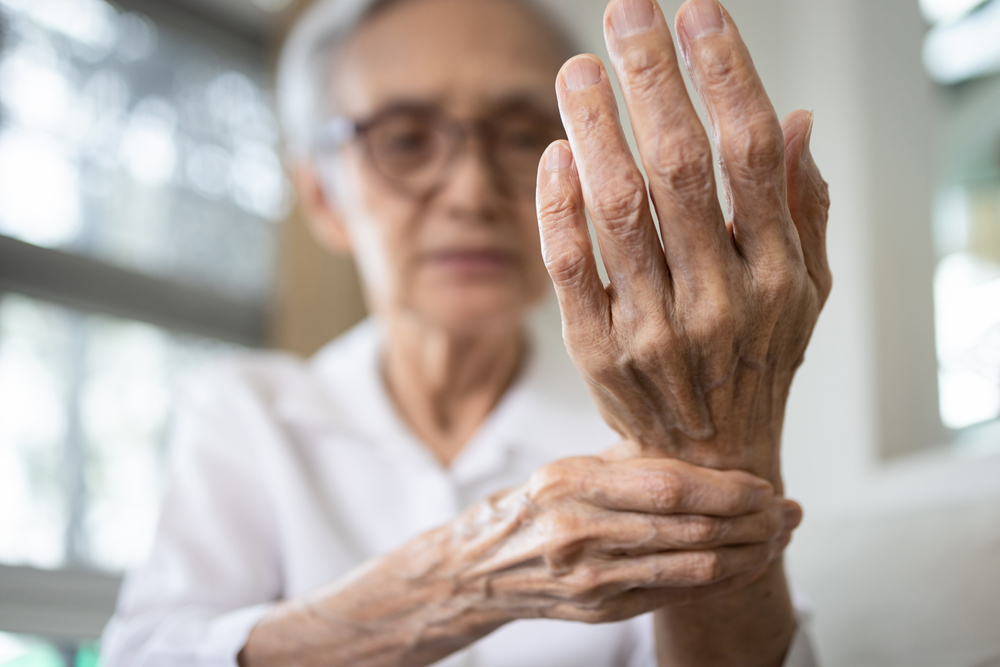If you notice this on your fingers, you should get checked for diabetes now, experts say. Skin conditions like this are often among the first symptoms.
This can indicate a dangerous condition
.
Diabetes is a chronic condition that affects blood sugar and metabolism – and it can have serious effects on your overall health. While that’s not news, you may be surprised at how prevalent this life-altering disease is: according to the Centers for Disease Control and Prevention (CDC), one in ten Americans is living with a diabetes diagnosis, and a shocking one in three already has diabetes.
Although there is currently no cure for diabetes, it is possible to control symptoms or even go into remission through a combination of medications and lifestyle measures. However, the most important thing is to start early at the first signs of symptoms. Among these first signs is a skin condition that you may notice on your fingers, according to experts. Read on to learn what to look for and how to reduce your risk of future complications.
If the skin on your fingers thickens, becomes tight, or appears waxy, you should get checked for diabetes.
According to the American Diabetes Association (ADA), about one-third of people with type 1 diabetes develop a skin condition called digital sclerosis. The condition is characterized by tight, thick, waxy “skin” on the backs of patients’ hands and occasionally causes the skin on their foreheads to thicken.
In addition to the altered skin texture, many people with digital sclerosis suffer from stiffness in their joints. “In rare cases, the skin over the knees, ankles, or elbows also thickens, making it difficult to extend the leg, bend the foot, or flex the arm,” explains the American Academy of Dermatology Association (AAD). “Wherever it occurs, the thickened skin often has the texture of an orange peel.”
The condition may be related to a potentially serious reduction in blood flow.
Although the exact cause of digital sclerosis is unknown, experts say it is likely caused by damaged blood vessels and nerves that reduce blood flow to the extremities and deprive tissues of oxygen.
“Diabetes patients have very high levels of sugar in their blood, which can damage the blood vessels under the skin,” Daniel Boyer, MD, a practicing physician and researcher at the Farr Institute, tells Best Life. “The damaged blood vessels may not supply the skin with enough oxygen and nutrients due to the resulting poor blood flow. This can impair the ability of white blood cells to fight infection and also kill or hinder the development and growth of collagen tissue,” Boyer adds.
A similar rash can also appear on the neck, back, shoulders or face.
It is not uncommon for people with digital sclerosis to develop a rash associated with what is known as Bushke’s scleredema adultorum, according to the Cleveland Clinic. Scleredema, which is characterized by the same features as digital sclerosis, typically occurs on the back, neck, shoulders and face.
This secondary rash occurs when deposits of collagen and aminoglycans form in the skin, according to a study published in the journal Diabetes & Metabolism. “The consequences could include decreased shoulder mobility and impaired respiratory function,” as well as sleep apnea, the researchers warn in the study.
Skin disorders are often among the first symptoms of diabetes.
The ADA points out that checking for skin changes can help detect diabetes in the early stages of the disease.
And if you notice signs of digital sclerosis, there’s a good reason to treat it as soon as possible. “Sclerosis is a risk factor for other complicated diabetic conditions such as diabetic retinopathy and nephropathy, which affect the eyes and kidneys, respectively,” Boyer says. However, Boyer points out that early intervention can reduce the risk of developing both conditions.
While there is no specific treatment for digital sclerosis, maintaining healthy blood sugar levels through regular exercise and a healthy diet can help improve the condition, Boyer says. “However, if the sclerosis leads to the development of bacterial infections on the skin, your doctor may prescribe certain antibiotics to improve symptoms,” he adds. Some patients can also relieve their joint stiffness with the help of physical therapy. If you suspect you have digital sclerosis, you should see a doctor as soon as possible.
